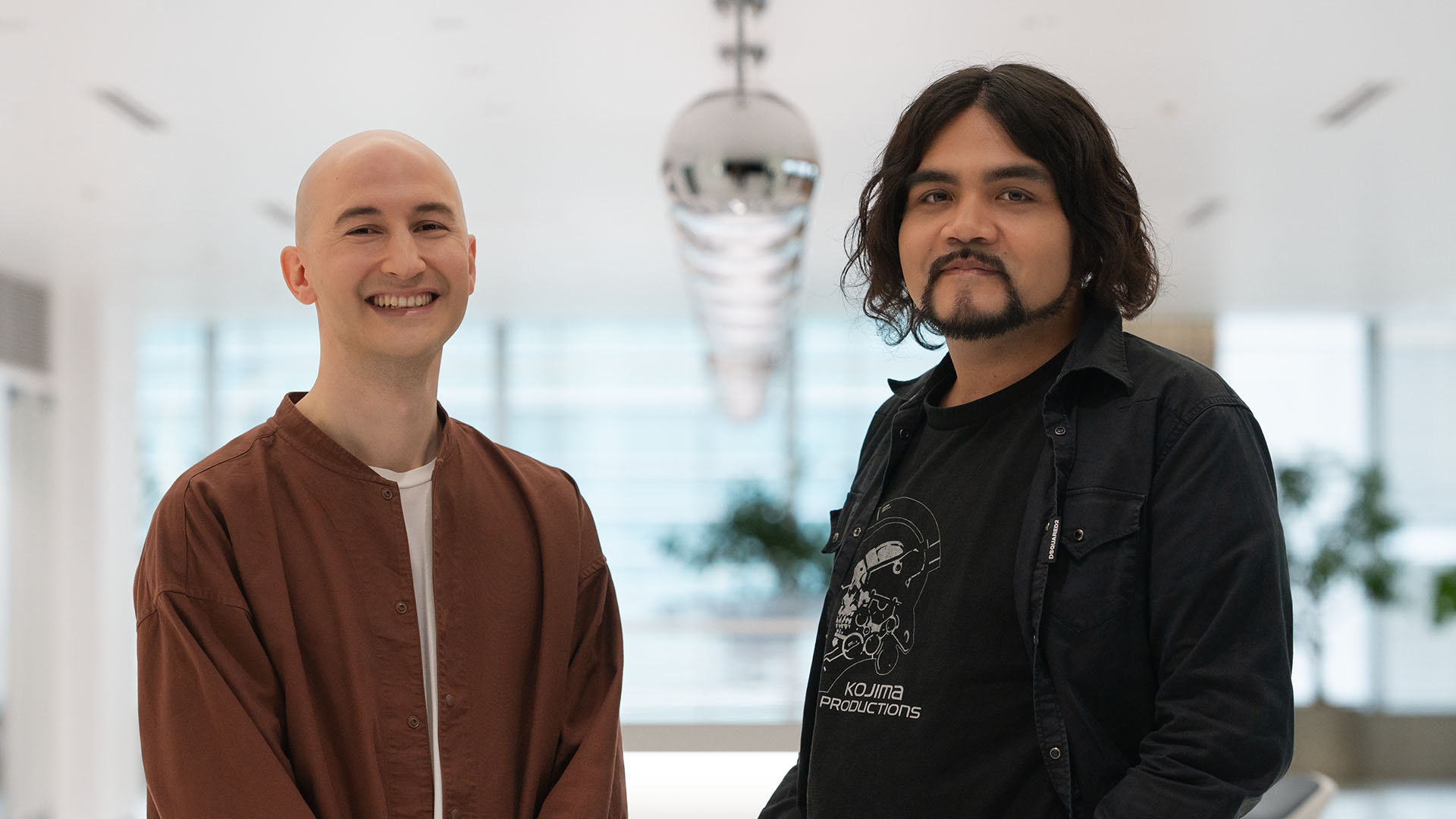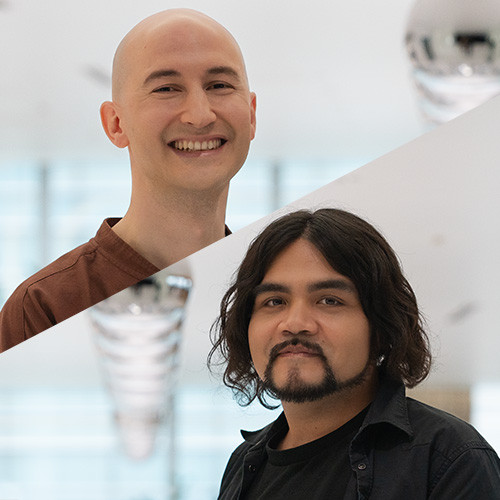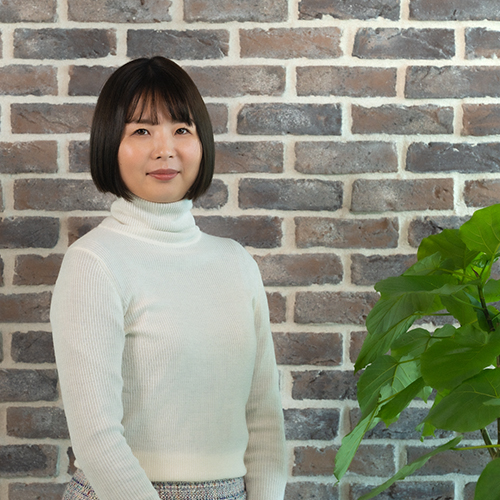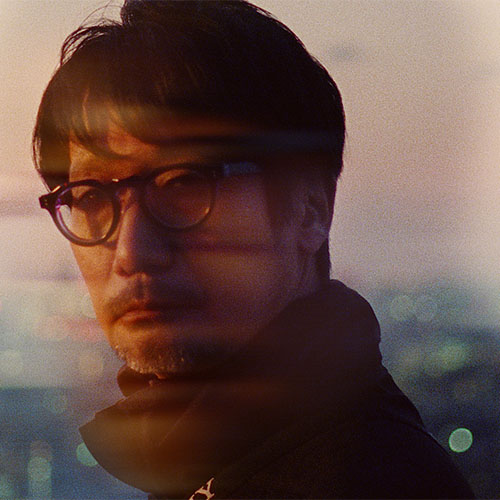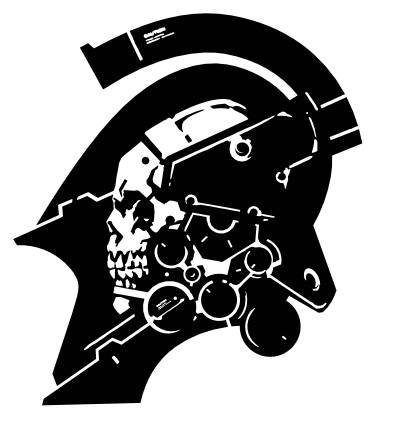There are many creators that bring the world of KOJIMA PRODUCTIONS to life.
In our sixth installment, we interviewed two members of our Art team who joined KOJIMA PRODUCTIONS from abroad!
Having grown up overseas, their first time working for a Japanese company was KOJIMA PRODUCTIONS. In addition to their reasons for joining the company and what their team atmosphere is like, we also focused on the company support they received upon getting hired from overseas.
[Profile]
Name: Thomas Ripoll Kobayashi
Role: Environment Artist
From Paris to Kojima Productions. On his days off, he likes to go “exploring” by riding on random subway trains and getting off wherever he feels like. He was recently in awe of a Showa-era cityscape he discovered in Asakusa!
Name: Gabriele Coen
Role: Animator
From Italy to Kojima Productions. He loves movies and the great outdoors. He is a father of two who loves waterfalls so much that when he sees one on a map, he heads straight to it.
Check out their interview in video form!
-------------
Q. Why did you decide to join KOJIMA PRODUCTIONS?
Thomas: I’ve been playing Japanese video games since I was a kid, so I’ve always wanted to work in Japan. I’m sure fans of Hideo Kojima’s works can understand, but haven’t you ever wanted to be a part of that team? His works gave me a reason to pursue the video game industry and introduced me to Japanese games. I’ve just always aspired to be here.
As I work here, I realize time and time again that all the people here are really experienced, and I learn a lot from them. At first, it was hard to believe I was working alongside the people I admired like Yoji Shinkawa and Hideo Kojima. I think it took a few months to get used that (laughs).
Coen: My wife is Japanese, and we had always talked about living in Japan someday. When I was thinking about where I should work, Kojima Productions was at the top of my mind.
In the end, the deciding factor was that I was drawn to Hideo Kojima and his love for films. I prefer the video game industry for work, but I really love movies. When I joined the company, I discovered that there were a lot of movie lovers here. We also have Movie Viewing Day, which is amazing.
Thomas: The films we watch at the Movie Viewing are picked out by Mr. Kojima himself. Many of them are films I had been meaning to watch but never got around to actually watching, so that's been really nice.
Coen: Our games themselves are influenced by films, so sometimes it’s interesting to think, “I wonder if this scene takes inspiration from that movie!” Above all, it also helps with work performance.
Q. Was there any support from KOJIMA PRODUCTIONS when you joined the team?
Thomas: The company took care of costs for moving, hotel, flights, etc. They booked a hotel for me for a month so that I could take my time finding housing. They also lent me a phone which was really convenient since that allowed me to have a phone I could use in Japan right away.
Coen: Things like opening a bank account, phones, housing, and so on...I was lucky my wife is Japanese, but those things can be difficult to do without help when you’re moving from overseas. In that regard, it’s a great relief to have a company that supports you.

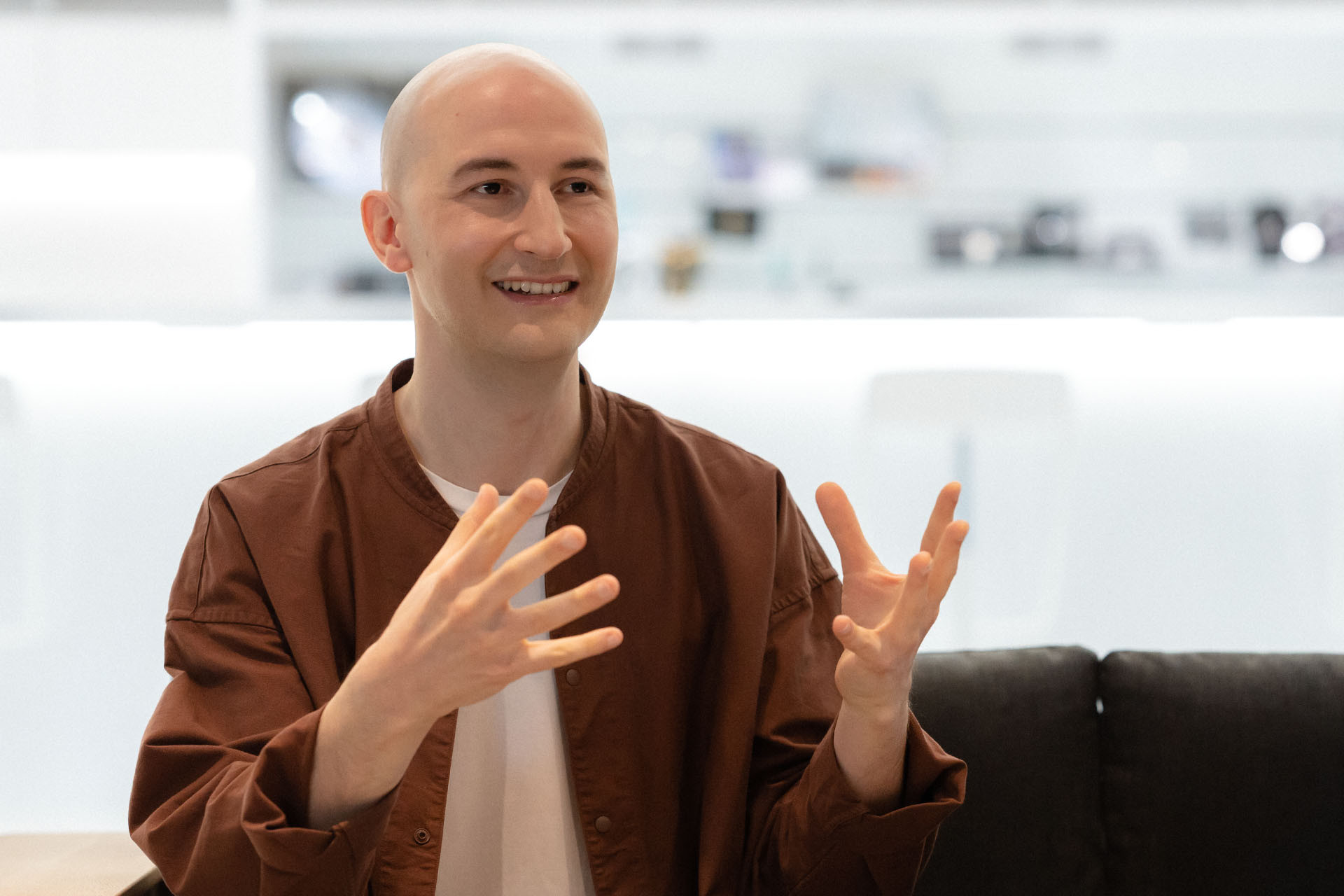
Q. What kind of work do you normally do?
Thomas: I create the scenery and cityscapes that you see in the game. Once the story, settings, and worldview are defined, we do a lot of research and get to work on the art. It’s not enough to just create a background; you have to think about the gameplay, too. It’s the job of the Environment Artist to create the environment while keeping in mind the game design.
Broadly speaking, there are two types: man-made and natural objects. For natural objects, sometimes we directly go to locations for geographical reference. In DEATH STRANDING, even the rocks that appear in the game are real rocks that we scanned on site. We strive for realism in our work, so we use real things as is sometimes.
In the case of man-made objects, the realism needs to be convincing. If the proportions are off by even 1%, players will notice and be distracted from the story. You can’t just stand behind the player and say, “Don’t look there! Look at the other stuff around you!” so we are especially careful.
Coen: On my team, I am mainly in charge of creature animations. Just like the Environment Artists, we look at things from a player’s perspective and think about how the creatures should move. For example, we create animations so that the player understands “attacks” and “damages” from just movements.
Since these creatures do not exist in real life, each movement requires a lot of imagination. We often use various animal movements for reference and combine them. In DEATH STRANDING, we have some creatures based off of dolphin or whale movements and for the tentacles, we used octopus and squid. It’s difficult to create animations that don’t feel off once it’s all put together. But, coming up with the ideas is a lot of fun.
---Do you two ever work together?
Thomas: There’s hardly ever a time when the Environment team and the Animator team work together.
Coen: That’s true. If anything, we work with the GD (Game Design) team more. In order to create animations and designs that convey our intentions so that the player doesn’t get lost, it’s imperative we closely align with the GD team.
Thomas: Occasionally, we have situations where, for example, we realize that a certain rock is getting in the way of the animation. In times like that, the Environment team and the Animators, along with various other teams, work together.
----When you’re on the Art team, do you communicate more with Mr. Shinkawa rather than Mr. Kojima?
Thomas: Yeah, since we’re Art, we often receive advice from Mr. Shinkawa. For example, I’ll send him environments that I made, and he gives me feedback like, “A little more like this,” or “You should adjust here.”
If it’s something directly related to the scenario, and we need to discuss settings like the worldview, then we’ll talk to Mr. Kojima about that.
Coen: Whenever I bring documents to Mr. Shinkawa for feedback, he’ll sometimes give me instructions by drawing pictures or diagrams. That makes me really happy because, in my mind, I feel like he drew a picture for me!
Thomas: Yes yes, I totally understand! Even a quick drawing that he does in my notebook, I’m like, “I can never throw this away!” I’m sure there are many fans who have his autograph, but it’s something else when you can get direct orders from him.
Q. What is the atmosphere of your team like?
Thomas: Our team atmosphere is very casual. It’s easy to discuss work stuff, we all each lunch together in the cafeteria (LINK), and we even go out for drinks or dinner, too.
Coen: My team is also very laid-back. I enjoy my work a lot! We’ve recently had some new young hires, so it would be nice to have a welcome party for the first time in a while.
Thomas: The Art team overall has an easy-going atmosphere where you can easily ask for help. You can talk to anyone as soon as you have a problem, so we frequently exchange feedback.
Coen: That’s right. Japanese companies have a strong impression of being rigid, so I was scared before coming here...but I didn’t have anything to worry about (laughs).

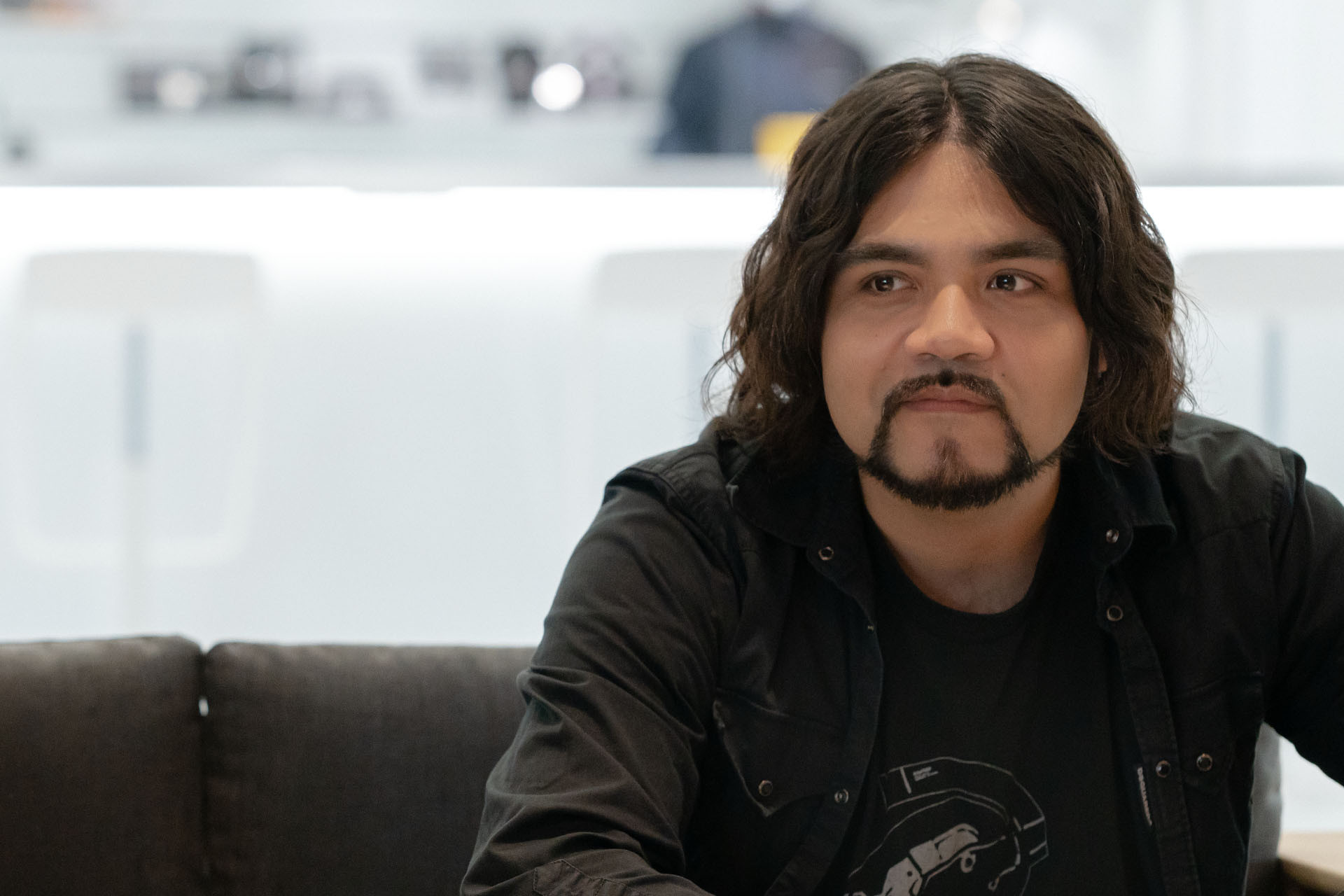
Q. What do you like about KOJIMA PRODUCTIONS?
Thomas: Our first game, DEATH STRANDING, was an unconventional game that made us rethink what games are to begin with. I think this was made possible because of our stance on always trying new things, creating things that no one else has done before, and continuing to challenge ourselves. What I like about KOJIMA PRODUCTIONS are the daily surprises I have when I learn about what we’ll be doing next.
Coen: We often make changes as we create things, so it’s quite difficult. But I think that’s one of the advantages of KOJIMA PRODUCTIONS being an indies studio and also what I like about KJP. We talked earlier about how there are so many experienced people at this company, and sometimes we talk about old projects that they used to work on, and it’s a lot of fun!
Thomas: Yeah! When I heard about a game that I used to be really into while in middle school, I was blown away. It’s interesting and a really valuable experience.
Q. What are your future plans?
Thomas: Since I am in a work environment with constant challenges, I would like to continue creating environments that tell a story for the next generation of games. In a world where technology constantly evolves, I want to research the latest technologies and proactively apply them to the video game industry, rather than continuing the same thing over and over again.
Coen: The evolution of technology is certainly faster than ever before... I am always concerned about how the user playing the game perceived my animations. As I take on the challengesI face at work, I would also like to continue doing my own research. Creatures that are scary, creepy, and above all, interesting: those are the types of things I want to create more of.

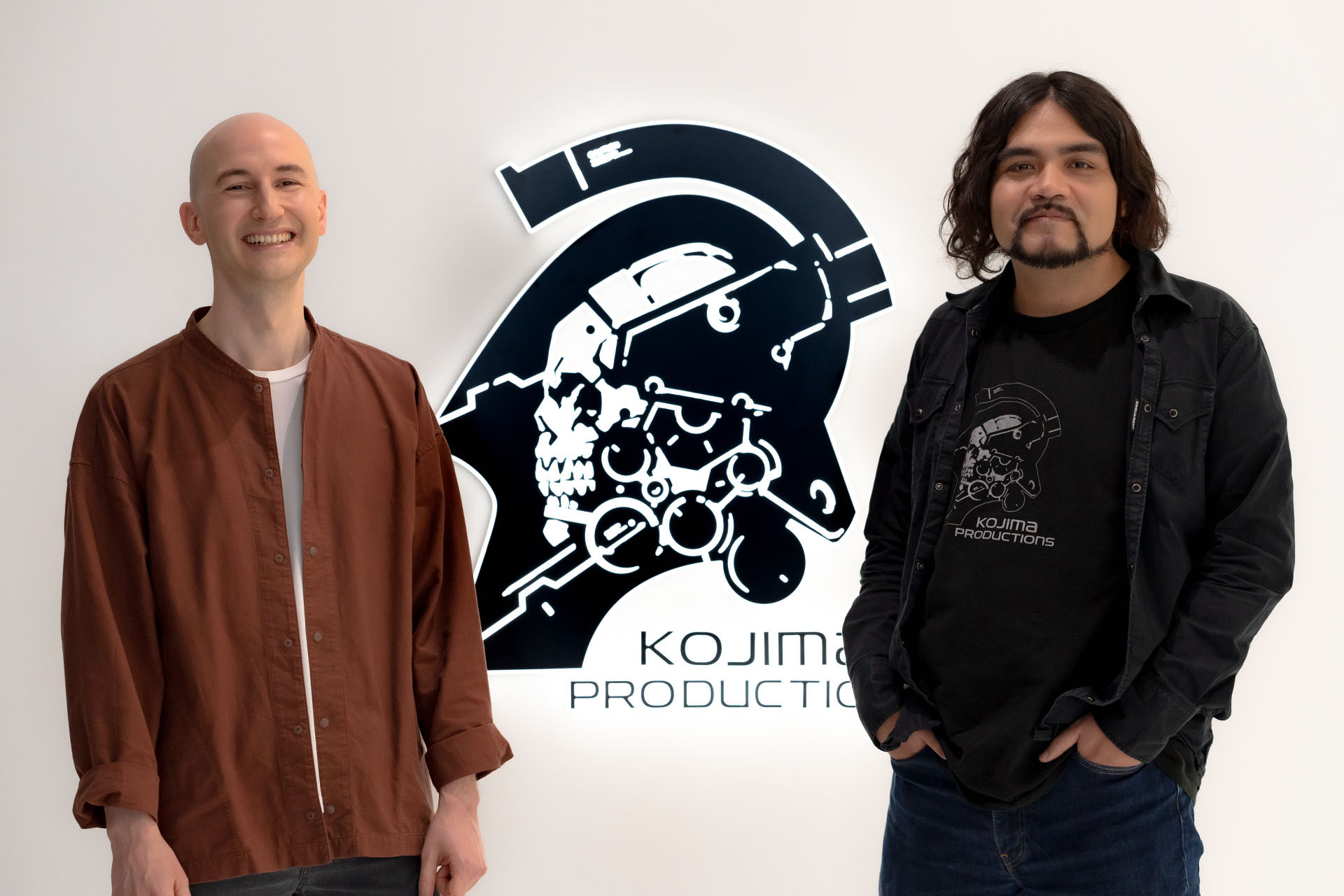
For more insight into other creative disciplines, be sure to check out our other interviews:
https://kojimaproductions.jp/en/careers_interview
KOJIMA PRODUCTIONS respects each employee's unique work style.
For more information, please check out our HR interview: https://www.kojimaproductions.jp/en/HR-interview
As we grow our team, we have opened several new positions.
Fore more details on our open positions, please visit our CAREERS page on our website:
https://www.kojimaproductions.jp/en/careers



